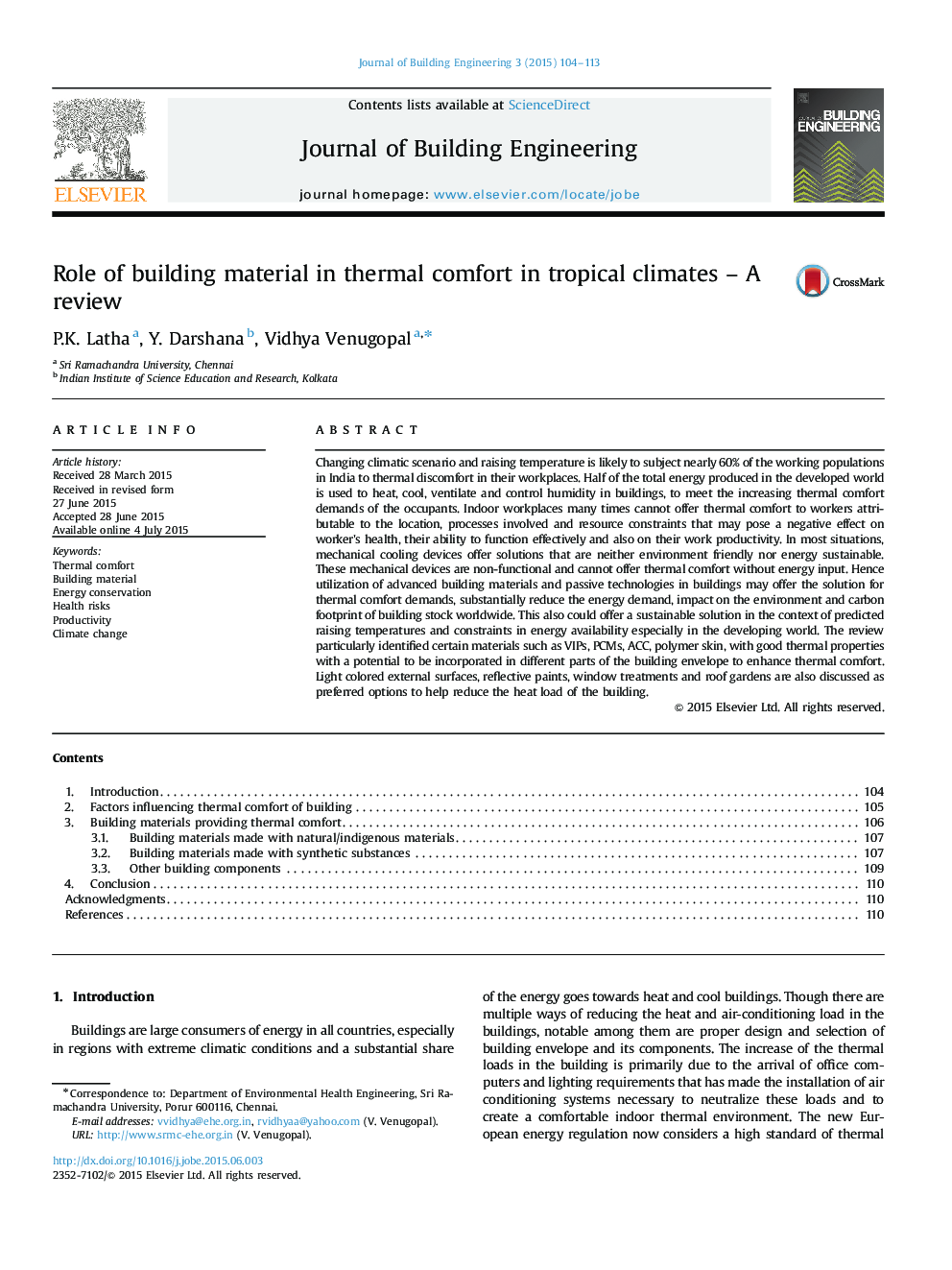| Article ID | Journal | Published Year | Pages | File Type |
|---|---|---|---|---|
| 283869 | Journal of Building Engineering | 2015 | 10 Pages |
•Thermal comfort is a growing concern in workplaces with rising temperatures in the face of Climate change.•We have reviewed building materials that provide thermal comfort at workplaces.•Natural and synthetic building materials that provide thermal comfort are discussed.•Use of building materials as a passive method for thermal comfort has co-benefits of energy saving and efficiency.
Changing climatic scenario and raising temperature is likely to subject nearly 60% of the working populations in India to thermal discomfort in their workplaces. Half of the total energy produced in the developed world is used to heat, cool, ventilate and control humidity in buildings, to meet the increasing thermal comfort demands of the occupants. Indoor workplaces many times cannot offer thermal comfort to workers attributable to the location, processes involved and resource constraints that may pose a negative effect on worker's health, their ability to function effectively and also on their work productivity. In most situations, mechanical cooling devices offer solutions that are neither environment friendly nor energy sustainable. These mechanical devices are non-functional and cannot offer thermal comfort without energy input. Hence utilization of advanced building materials and passive technologies in buildings may offer the solution for thermal comfort demands, substantially reduce the energy demand, impact on the environment and carbon footprint of building stock worldwide. This also could offer a sustainable solution in the context of predicted raising temperatures and constraints in energy availability especially in the developing world. The review particularly identified certain materials such as VIPs, PCMs, ACC, polymer skin, with good thermal properties with a potential to be incorporated in different parts of the building envelope to enhance thermal comfort. Light colored external surfaces, reflective paints, window treatments and roof gardens are also discussed as preferred options to help reduce the heat load of the building.
